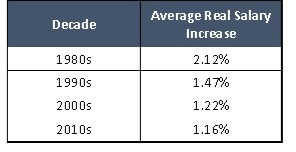2021 Salary Increase Projections - Still Cloudy For Many Companies
- POE Group
- Oct 5, 2020
- 3 min read
Updated: Jul 27, 2022

Salary increases (i.e., merit, promotion, and other adjustments) from 2015-2019 were steady at, or above, 3% per year.
Actual increases for 2020 were at 2.9% for all employees, based on the World at Work 2020-2021 Salary Budget Survey, which is the first time in 12 years that salary increases have fallen from the prior year.
In addition, survey results indicated that roughly 16% of companies stated that they are not providing salary increases for 2020, which is about ten times more than in 2019.
Will Salary Increases be Lower in 2021?
There are reasons to believe that the lower salary increases of 2020 will persist into 2021, namely that the pandemic that began in 2020 will continue into 2021. The survey projected that the average salary increases across all employee types will be 2.9% for 2021.
Inflation rates are forecast to increase in 2021, so the real annual pay increases when inflation is factored in may be quite small.
In fact, the International Monetary Fund (IMF) has predicted that the U.S. inflation rate will be around 2.1% for 2021, so when compared to the 2021 average forecasted salary budget increase of 2.9%, that comes out to a real pay increase of just 0.8%.
The table below shows the average pay increases for each employee type since 2015 compared to annual inflation levels:

Sources: World at Work Annual Salary Budget Surveys 2015 – 2020 and the Bureau of Labor Statistics

The chart on the right shows a graphical comparison of salary increases to increases adjusted for inflation.
Salary increases have hovered near 3% in recent years, but when adjusted for inflation, a different picture is shown.
Real pay increases (after adjustment for inflation) have actually been closer to 1.5%. It is worth noting that in 2018, the real pay increase was actually only 0.2%, which means that many workers’ buying power didn’t meaningfully change, despite receiving a pay increase.

The table to the left shows that real pay increases over the last decade have been quite low relative to historic levels.
The Economic Research Institute (ERI) recently posted an analysis of how real salary increases have varied over the past several decades, calculated as the percentage of salary increase budgets less the percentage change in the CPI through 2016. The results show that real pay increases have been declining, and are down nearly a full percentage point since the 1980s.
If pay raises aren’t doing much to outpace inflation, workers may view their compensation packages as stale and may seek better pay elsewhere. However, opportunities to change jobs may be limited, as current unemployment levels are still relatively high at 8.4%, according to the Bureau of Labor Statistics August 2020 Report.
While pay increases in for 2020 and 2021 are projected to be lower than in recent years, there are reasons to speculate that pay increases may be even lower than the early survey results would indicate.
We would not be surprised if pay increases for 2021 end up being at or below 2.5%, rather than the 2.9% indicated by the World at Work survey, as the survey was conducted in May and June, and budgets may have been reduced later in the year.
Although companies are optimistically looking to 2021 as a continued return to normalcy, the ability to return to pre-pandemic profitability levels and normal pay changes is uncertain. In addition to the strategies listed below, we advise firms to continue monitoring salary budget survey data, which we believe will be updated later this year.
Pay Strategies for Companies Going Forward
Companies may consider different approaches when faced with limited budgets for pay increases.
Target your high performers for increases, and middle/lower performers may not receive an increase during tighter budget conditions.
Consider deferring merit pay changes to later in the year when business conditions may be better known.
This is a great time for companies to consider a variable or incentive pay plan to complement their base pay programs. Utilizing incentive pay has the advantages of not increasing fixed costs and ties potential rewards to desirable business outcomes.
Although competitive wages are certainly an important reason employees remain with organizations, they are not the only reason. Companies should consider non-financial aspects of work, such as enhancing their efforts in career growth and performance management, building an engaging company culture, and providing work/life balance. These factors are most significant in retaining employees.
- Joe Kager, Managing Consultant at The POE Group. Joe is a Certified Compensation Professional with over twenty-five years of experience in compensation and human resources. Call him at 813-546-8628, or email him directly at joe.kager@poegroup.com




Comments